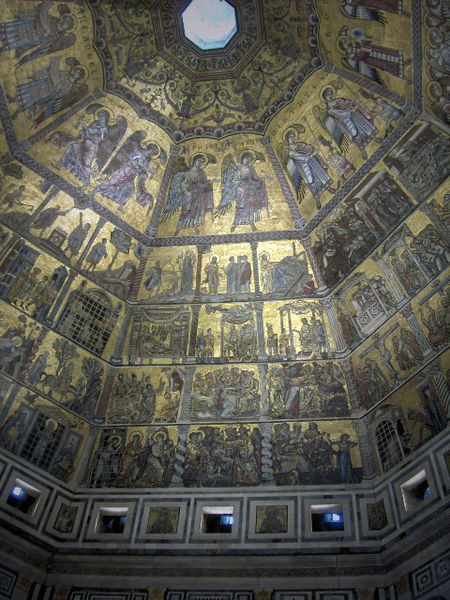Paolo Uccello, born Paolo di Dono, was an Italian painter and mathematician who was notable for his pioneering work on visual perspective in art. In his book Lives of the Most Excellent Painters, Sculptors, and Architects, Giorgio Vasari wrote that Uccello was obsessed by his interest in perspective and would stay up all night in his study trying to grasp the exact vanishing point. Uccello used perspective to create a feeling of depth in his paintings. His best known works are the three paintings representing the battle of San Romano, which were wrongly entitled the Battle of Sant'Egidio of 1416 for a long period of time.
Portrait of Paolo Uccello (unknown artist) Louvre Museum, Paris
Funerary Monument to Sir John Hawkwood
Saint George and the Dragon (c. 1470), showing Uccello's Gothic influences
Niccolò Mauruzi da Tolentino at the Battle of San Romano (probably c. 1438–1440), egg tempera with walnut oil and linseed oil on poplar, 182 × 320 cm, National Gallery, London.
Florentine painting or the Florentine School refers to artists in, from, or influenced by the naturalistic style developed in Florence in the 14th century, largely through the efforts of Giotto di Bondone, and in the 15th century the leading school of Western painting. Some of the best known painters of the earlier Florentine School are Fra Angelico, Botticelli, Filippo Lippi, the Ghirlandaio family, Masolino, and Masaccio.
Filippo Lippi, Adoration in the Forest, by 1459
Cimabue, Madonna of Santa Trinita, c. 1285, once in the church of Santa Trinita, now in the Uffizi Gallery.
Mosaic ceiling of the Baptistery of St John in Florence, dating from around 1225.
Giotto's fresco, the Mourning of St. Francis in the Bardi chapel of Santa Croce.








